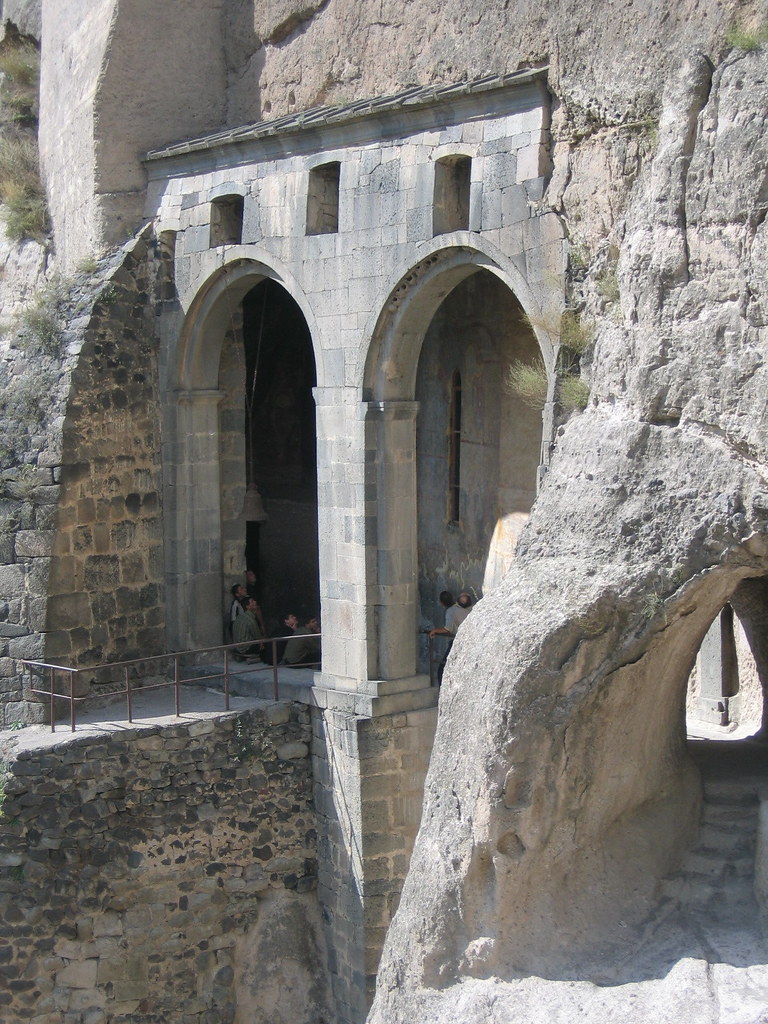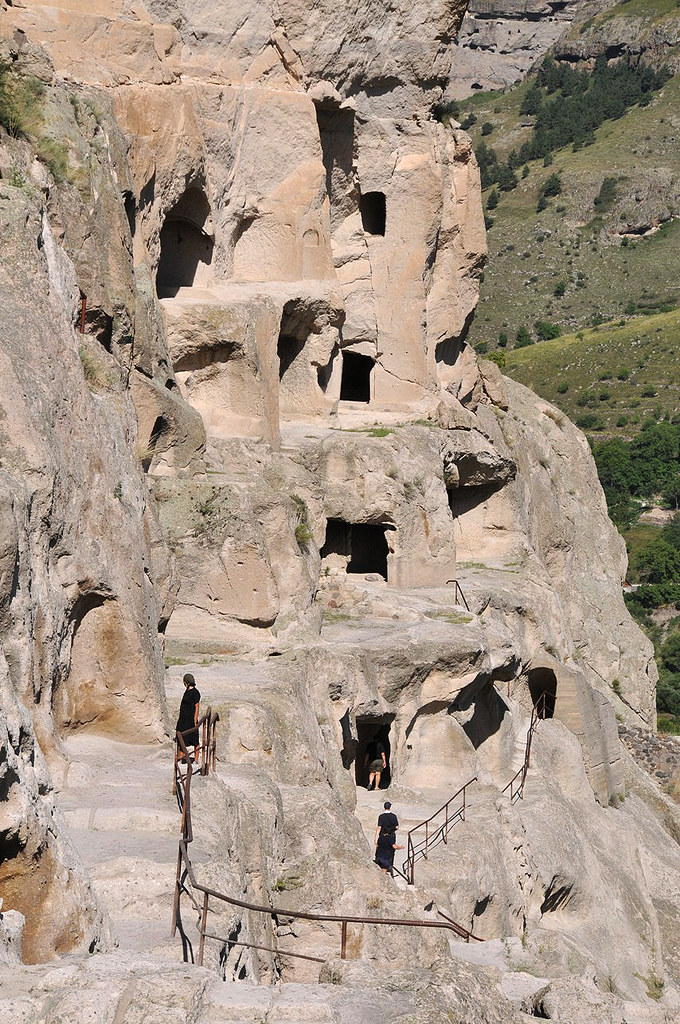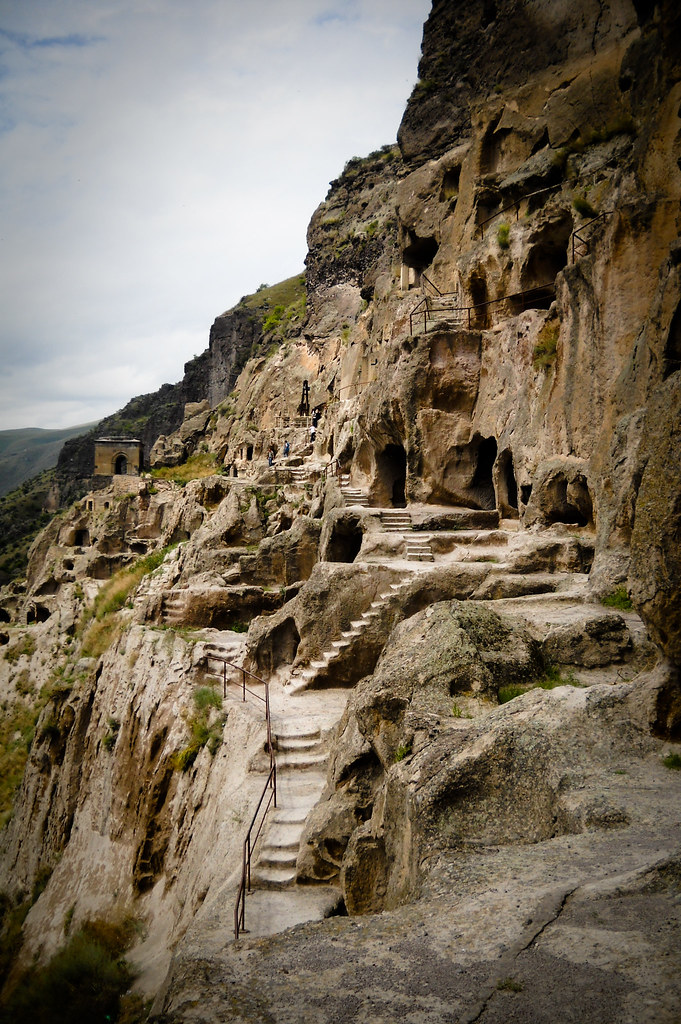Namun, Vardzia berubah fungsi, dari kota pertahanan menjadi kota relijius. 2.000 biksu tinggal di Vardzia. Kota batu ini juga memiliki sebuah gereja, ruang singsana dan sebuah komplek irigasi untuk mengairi pertanian.
Dahulu, satu-satunya pintuk masuk ke kota ini hanya melalui saluran sumur, yang tersembunyi di dekat sungai Mtkvari. Namun, gempa yang melanda Samtskhe tahun 1283 telah menghancurkan dua per tiga kota Vardzia. Akibatnya, keberadaan Vardzia terungkap. Namun, sistem irigasi sudah rusak.
Ratu Tamar pernah menggunakan Vardzia untuk bersembunyi dari musuh-musuhnya. Dia menggunakan 366 ruangan sebagai tempat persembunyian untuk mengecoh musuhnya. Kini, setelah hancur karena gempa, Vardzia terbuka menjadi obyek pariwisata, dengan sisa ruangan mencapai 750 buah, yang dihubungkan oleh koridor2.
Hingga saat ini masih banyak koridor dan ruangan yang tersembunyi. Para biksu yang masih tinggal di Vardzia pun kini banyak berperan sebagai pemandu wisatawan.
The Cave City of Vardzia is remarkable. Situated in the European country of Georgia at the juncture of Eastern Europe and Western Asia it has an over eight hundred year history. Yet you would be forgiven for wondering why such a place was built in the first place. The words why and how spring immediately to mind.

The Mongol empire had been inexorably expanding and little Georgia was under threat constantly. What better an idea, then, for their fabled Queen to have her monastery carved from solid rock. It looks like it is the ruins of some giant Tolkien city, Minas Tirith in ruins. Yet this was not to be the home of dwarves but of monks – and many of them.
Desperate times lead to desperate measures and to help her people avoid the Mongol onslaught, Tamar commanded that an underground sanctuary be built. The town of Aspindza was chosen and the secret work began under the nearby Erusheli Mountain.
 The queen (seen left on a mural from inside the monastery) was twenty five years old when the construction work began and had been on the throne only a year.
The queen (seen left on a mural from inside the monastery) was twenty five years old when the construction work began and had been on the throne only a year.Nobles tried persistently to usurp her position, on grounds of her relative immaturity and of course her gender but she ruled for 29 years. A warrior queen she is still revered by many in Georgia.

Altogether, 13 levels were constructed with natural caves being enlarged to contain over 6,000 dwelling places for monks and for those fleeing invaders. The only way to get to this underground kingdom was via a secret tunnel which started at the nearby Mtkvari river.

The city escaped the Mongols triumphantly. Yet less than a hundred years after its construction, the great earthquake of 1283 brought devastation to the country. It was so powerful that it ruptured the cave system, causing much of it to collapse and cascade down the side of the Erusheli Mountain.
If you look closely at the two pictures above you will notice the remnants of the terrace walls on the top of the mountain. You will also be able to make out where the mountain simply sheared off and simply dropped to the ground below, exposing the monastery within. The event was cataclysmic.
It must have seemed like a punishment of god to the residents of the city, perhaps retribution for the pride they had taken in successfully defending their nation from the Mongols. Two thirds of the hidden city was destroyed – and its unseen intestines were exposed to the world on the side of the mountain.



















0 komentar:
Posting Komentar
Mohon Commnent